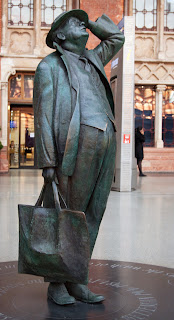The image above is my final choice. Why? Because it sums up the group and the event. The elaborate hats worn by both men and women, but also this image shows the lineage. A pearly princess as the focus of the image. The queen out of focus. The elaborate hats. The younger's hat introducing a newer interpretation of the a pearly grand hat.
 Working backwards, what was I trying to say? How did I go about it. I went to a couple of Pearly events to complete this exercise. The costumes are wonderful and I began by taking pictures showing a lot more of the costumes and with more people in the images. I looked at parts of the costumes including the image focusing on one woman's bag. However it was the hats that attracted me the most and that I felt I wanted to say something about. I moved to these two women on the left and took a series with a different focal point. Then when the princess walked into the scene I knew that this would say more. I have the glamour of the hats and the new generation. I chose to make the princess the main focus of the image.
Working backwards, what was I trying to say? How did I go about it. I went to a couple of Pearly events to complete this exercise. The costumes are wonderful and I began by taking pictures showing a lot more of the costumes and with more people in the images. I looked at parts of the costumes including the image focusing on one woman's bag. However it was the hats that attracted me the most and that I felt I wanted to say something about. I moved to these two women on the left and took a series with a different focal point. Then when the princess walked into the scene I knew that this would say more. I have the glamour of the hats and the new generation. I chose to make the princess the main focus of the image. Below are the series of images I took as I was attempting to find the right composition.
























